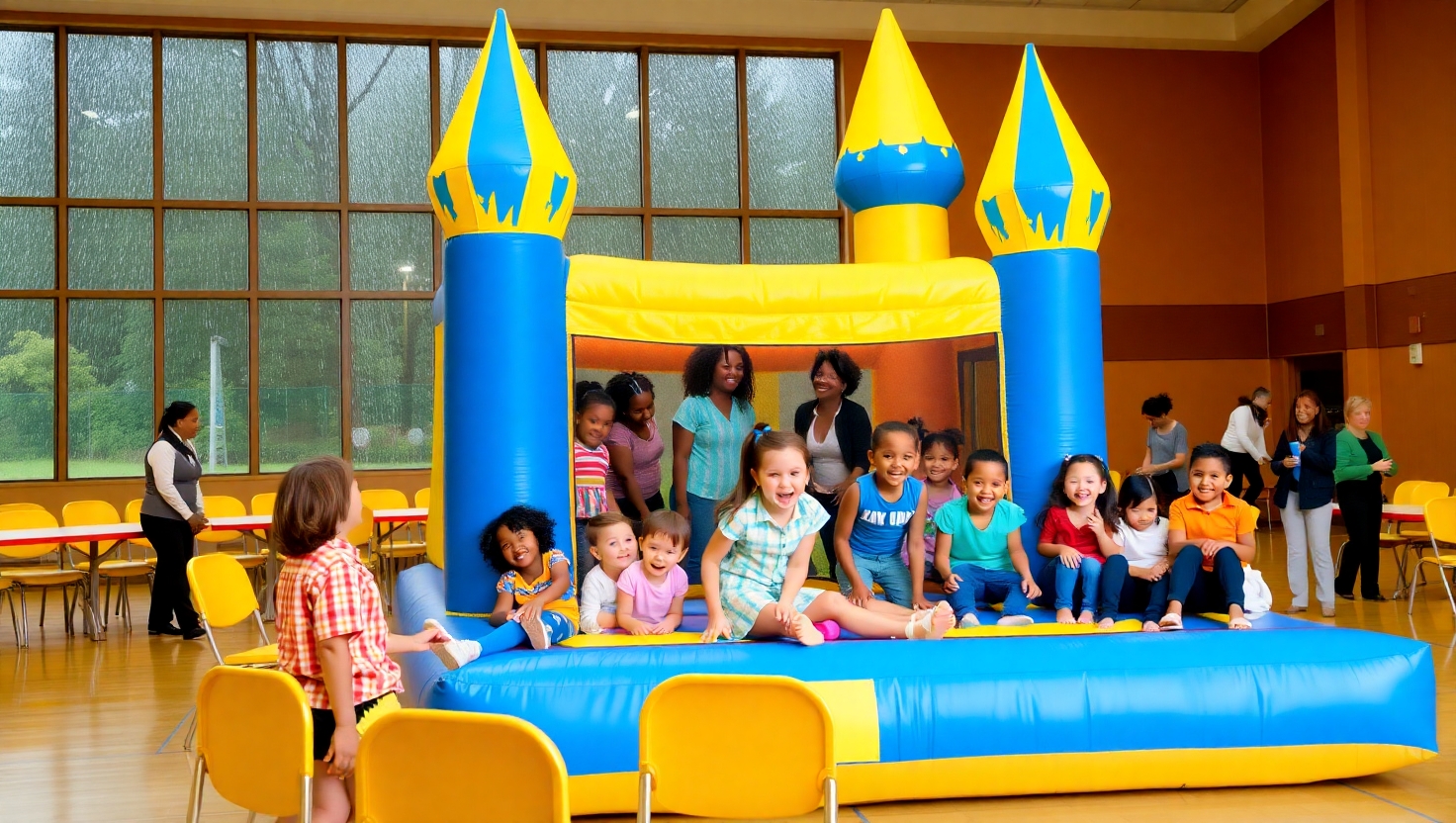
All you want to know about us
Click here to share this article

Bouncy castles have become a staple of entertainment for children’s parties, school events, and community gatherings. While their popularity is undeniable, many people wonder about the electricity consumption of these inflatable structures. In this article, we will provide a comprehensive analysis of the energy usage of bouncy castles, helping you understand their impact on electricity bills and how to manage costs effectively.
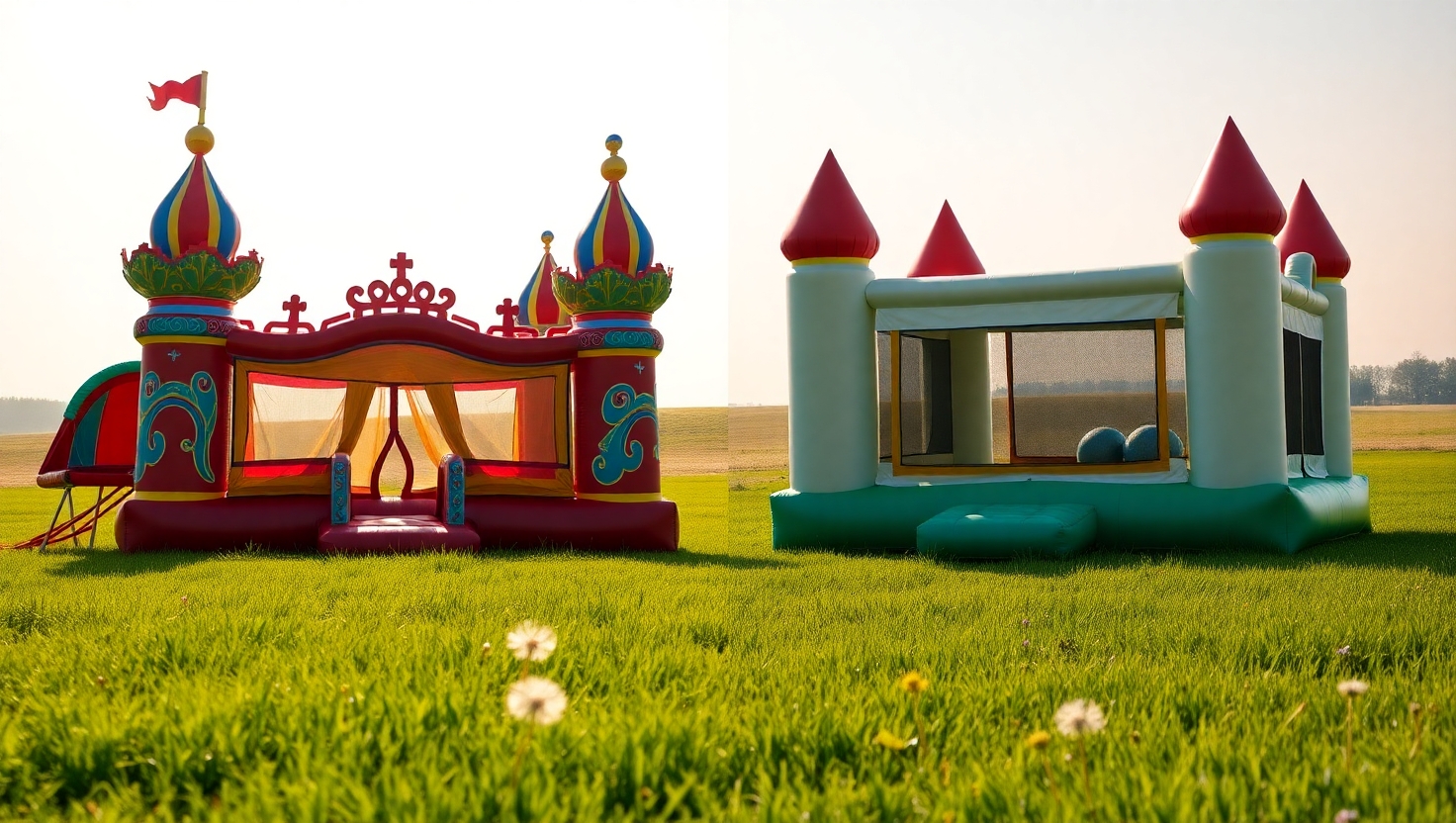
How Do Bouncy Castles Work?
To understand the electricity usage of a bouncy castle, it is essential to know how they operate. Bouncy castles rely on an electric blower to maintain constant airflow, which keeps the structure inflated. This blower runs continuously throughout the duration of use, ensuring that the castle remains stable and safe for participants. Unlike static inflatables, bouncy castles require a consistent power supply to function properly.
Key Components of a Bouncy Castle’s Energy Usage:
The Blower Motor: The blower is the primary source of electricity consumption. It draws power to generate airflow, measured in watts or kilowatts.
Duration of Use: The total energy consumption depends on how long the bouncy castle remains inflated.
Blower Efficiency: The efficiency of the blower motor significantly influences electricity usage. Modern blowers tend to be more energy-efficient compared to older models.
Castle Size: Larger bouncy castles require more powerful blowers, which consume more electricity.
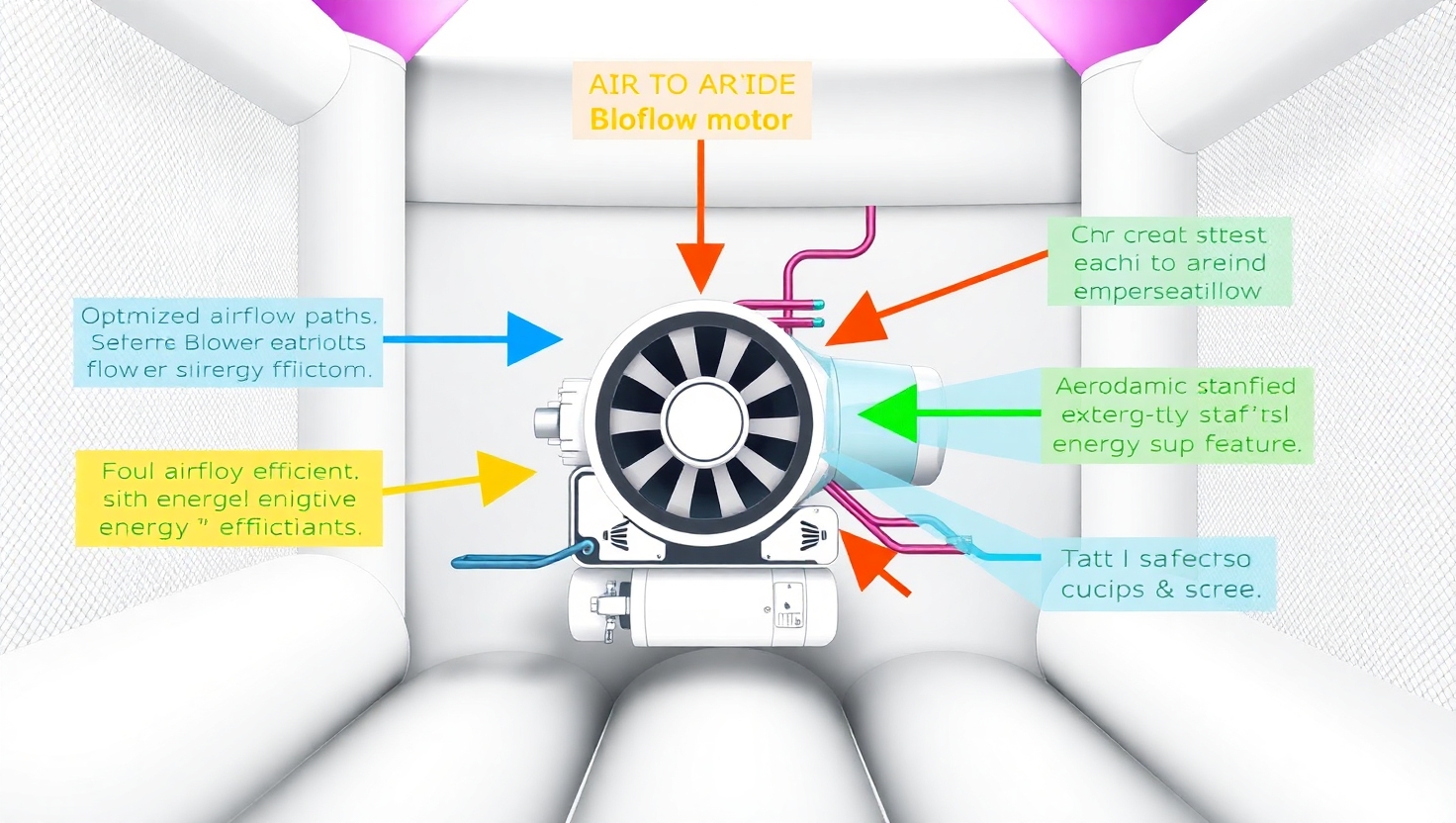
Electricity Usage of Bouncy Castles: A Detailed Analysis
Power Consumption of Blower Motors
The typical blower motor for a standard-sized bouncy castle consumes between 1.1 kW and 1.5 kW per hour. For larger inflatables, such as obstacle courses or massive slides, the blower might use 2 kW or more per hour. Let’s break this down further:
Small Bouncy Castle: Approximately 1.1 kW per hour.
Medium-Sized Castle: Around 1.5 kW per hour.
Large Inflatable Structures: Between 2 kW and 2.5 kW per hour.
Cost Implications
To estimate electricity costs, multiply the blower’s power consumption by the local electricity rate (typically measured in kWh). For example, if the rate is $0.15 per kWh, the cost for operating a bouncy castle with a 1.5 kW blower for four hours would be:
1.5 kW × 4 hours × $0.15 = $0.90
For larger inflatables using a 2 kW blower, the cost would rise to:
2 kW × 4 hours × $0.15 = $1.20
Thus, the electricity cost remains relatively low for most users.
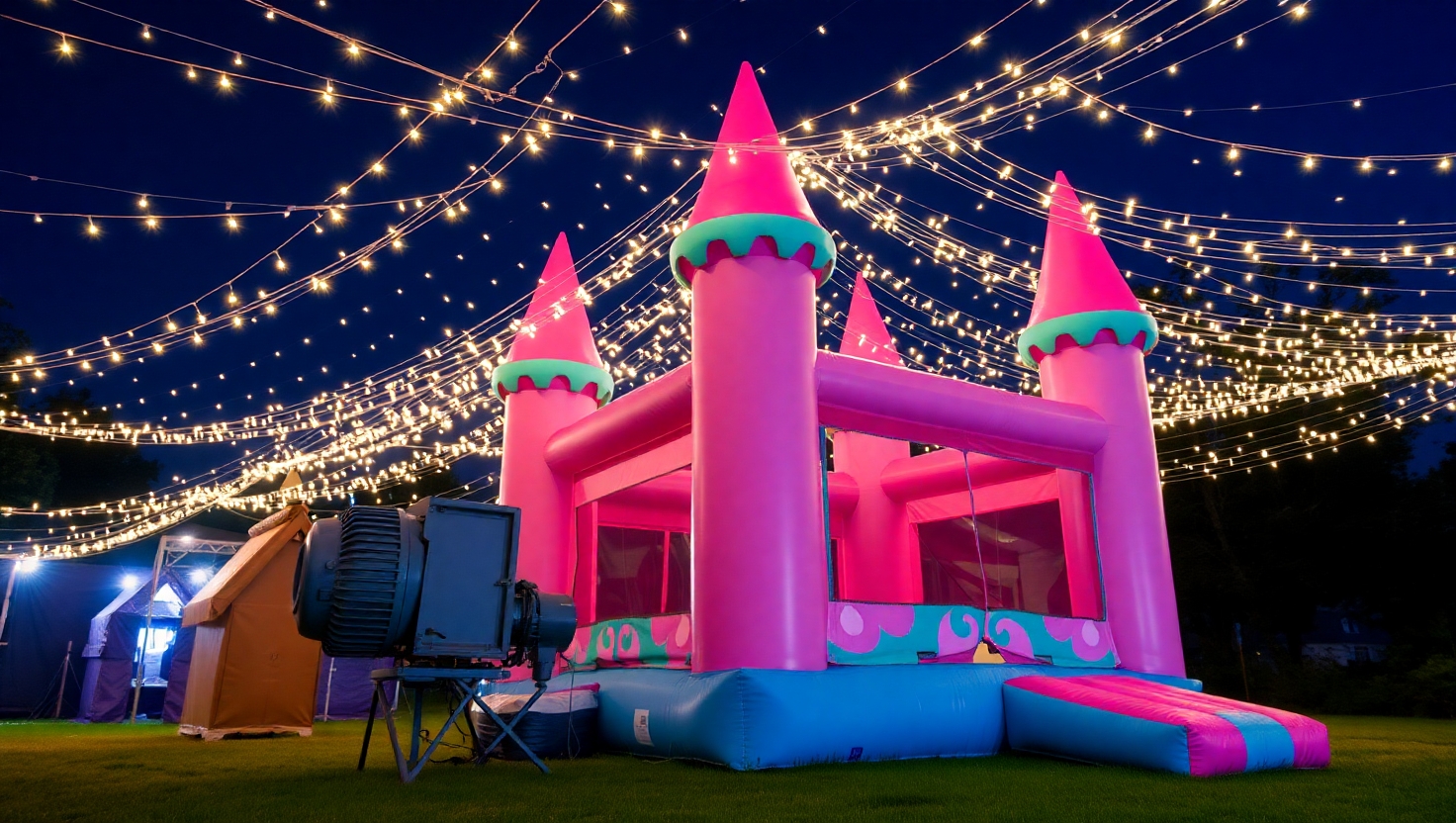
Factors Affecting Electricity Consumption
Duration of Operation
The longer the bouncy castle is in use, the more electricity it will consume. Events lasting several hours will naturally incur higher energy costs than shorter gatherings.
Weather Conditions
Operating a bouncy castle in windy conditions may require the blower to work harder, increasing electricity usage. Additionally, wet weather can add weight to the inflatable material, further taxing the blower motor.
Blower Maintenance
A well-maintained blower operates more efficiently. Regular cleaning and servicing ensure optimal performance, reducing unnecessary electricity consumption.
Energy-Efficient Models
Modern blowers are designed with energy efficiency in mind. If you are considering purchasing or renting a bouncy castle, inquire about the energy rating of the blower motor.
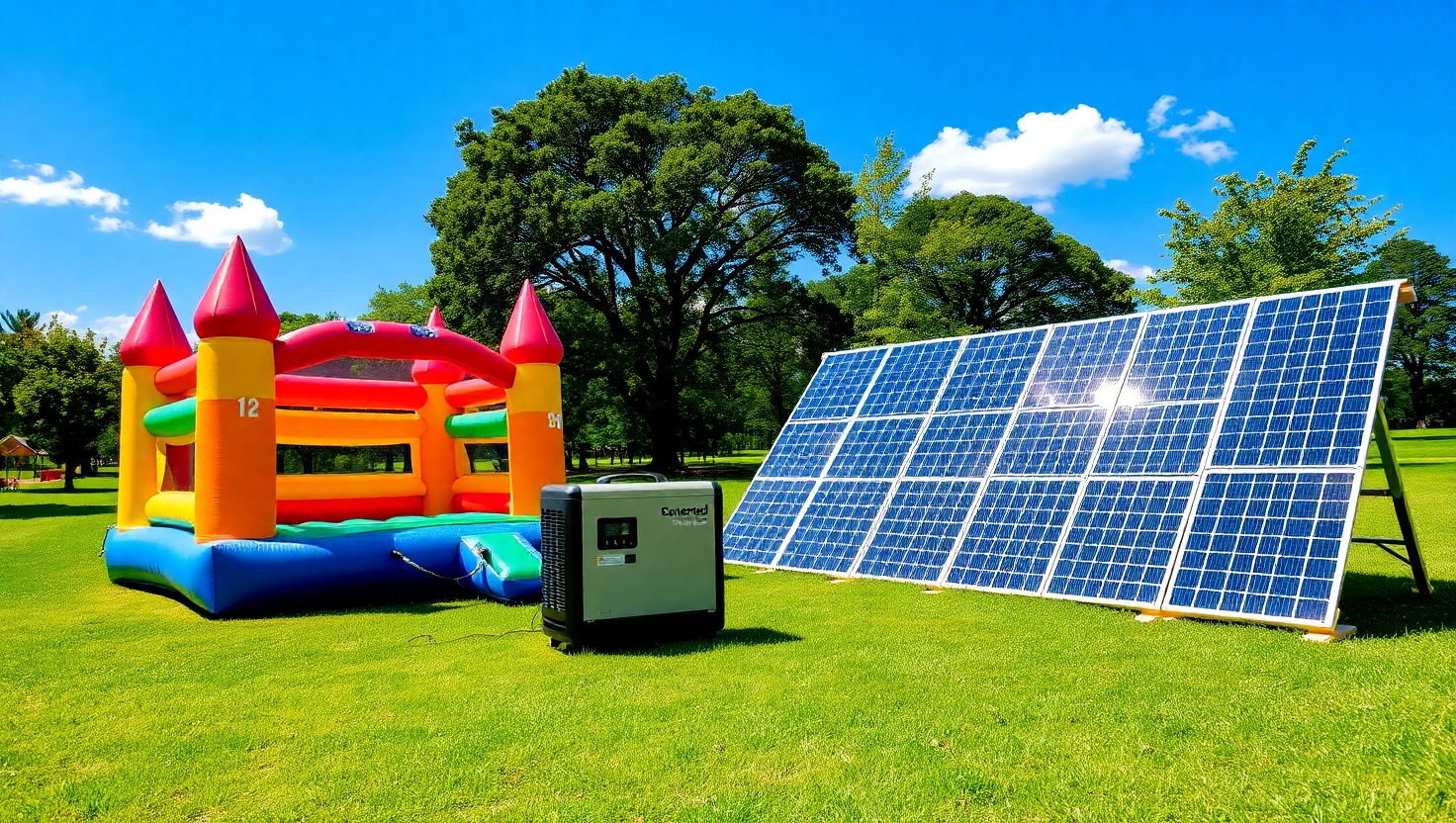
Practical Tips to Minimize Energy Costs
While bouncy castles do not typically use excessive electricity, there are several steps you can take to further reduce costs:
Limit Operating Hours: Inflate the bouncy castle only when it’s actively in use. Turn off the blower during breaks or downtime.
Choose the Right Size: Opt for a bouncy castle size appropriate for your event to avoid using an unnecessarily large blower.
Invest in Energy-Efficient Blowers: Modern blowers consume less power while maintaining high performance.
Monitor Usage: Use a plug-in energy monitor to track electricity consumption in real time.
Optimize Placement: Set up the bouncy castle in a sheltered location to minimize the impact of wind, reducing the blower’s workload.
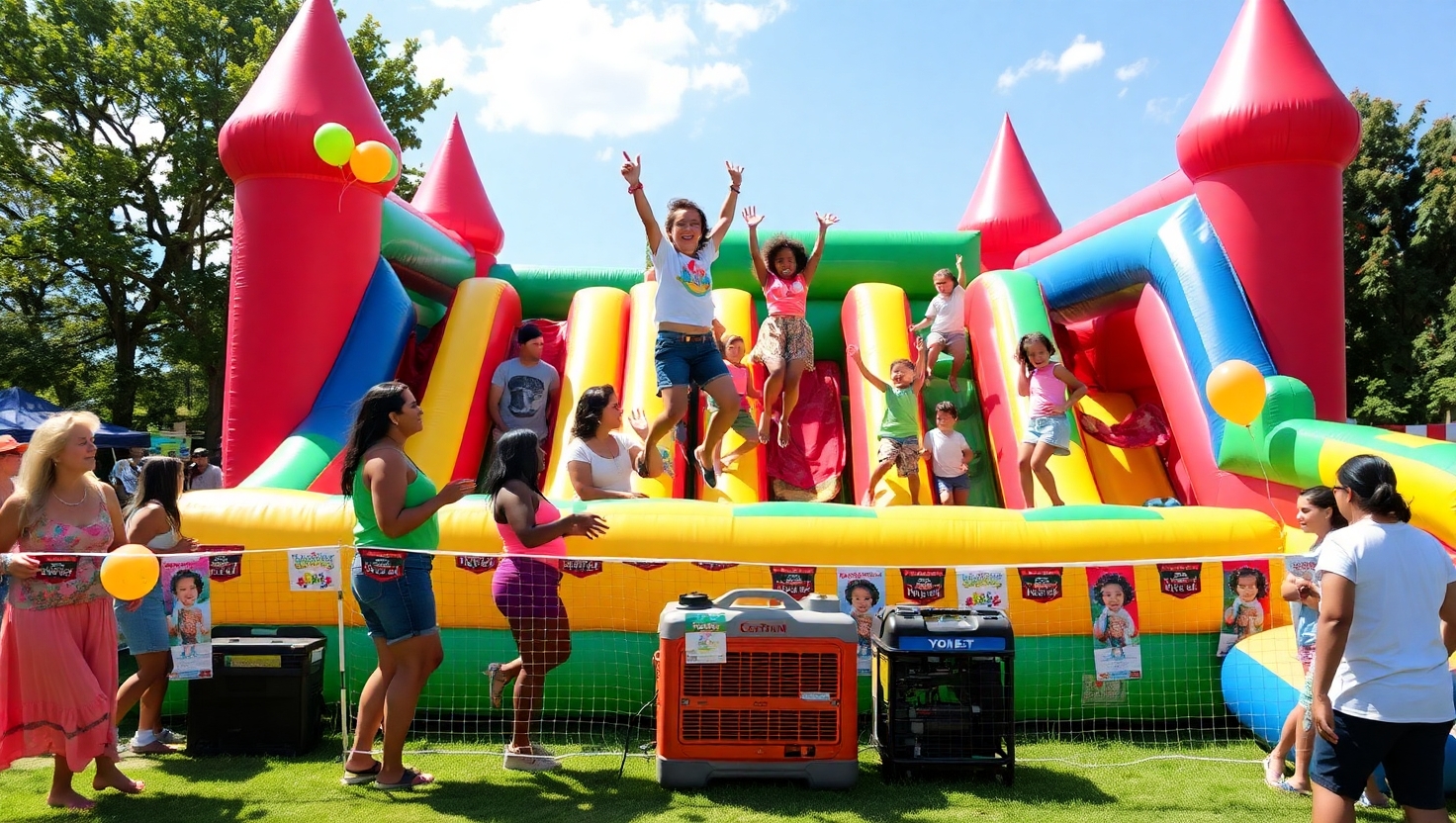
Environmental Impact of Bouncy Castle Electricity Usage
While the electricity usage of a bouncy castle is generally low, it’s still worth considering its environmental footprint. Opting for energy-efficient models and limiting usage duration can reduce the associated carbon emissions. Additionally, some event organizers choose to power bouncy castles using renewable energy sources, such as portable solar generators, to further minimize environmental impact.
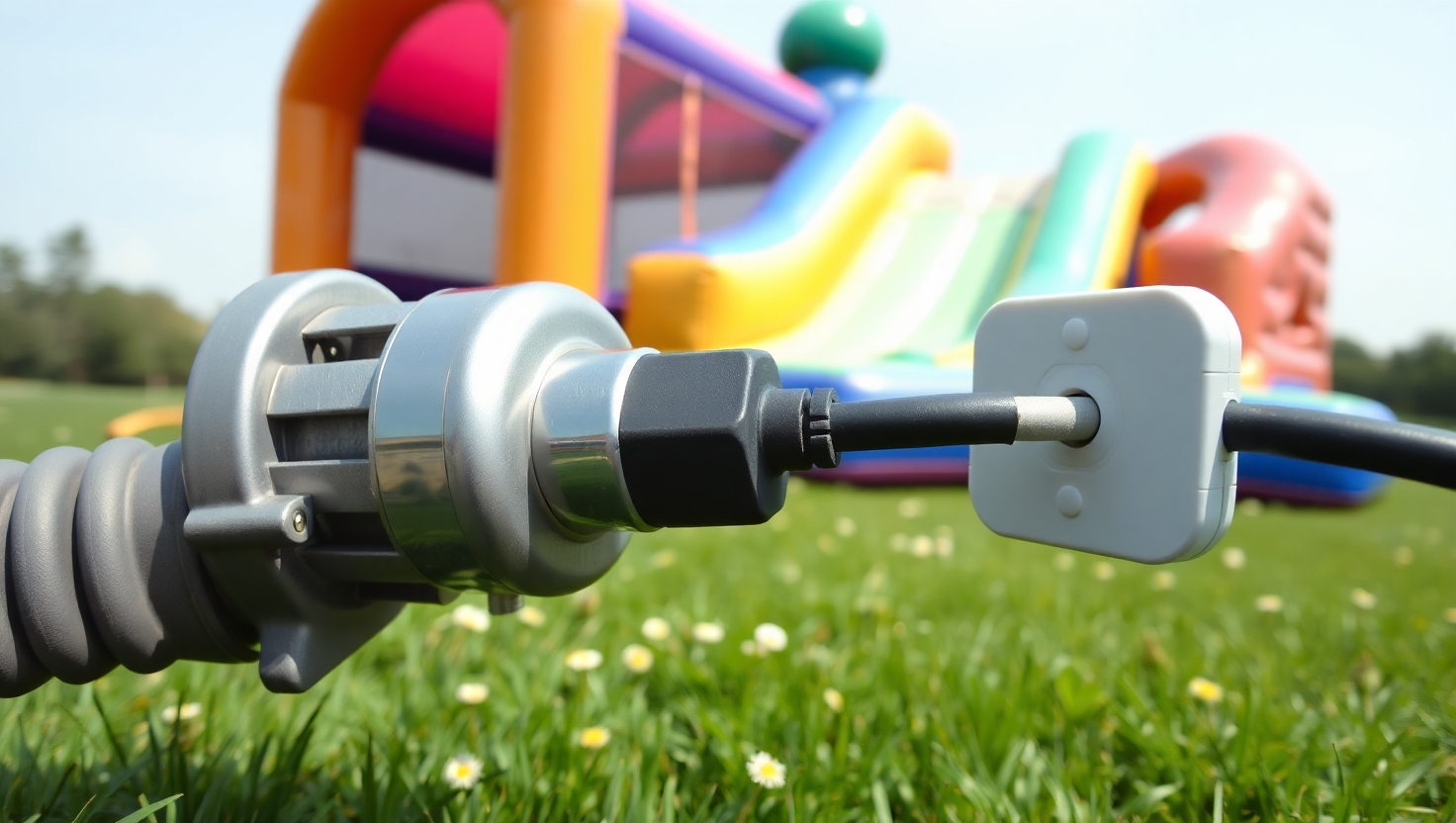
FAQs About Bouncy Castle Electricity Usage
1. How much does it cost to run a bouncy castle for an entire day?
For an eight-hour event, a standard 1.5 kW blower would cost approximately $1.80 (at $0.15 per kWh). Larger models with a 2 kW blower might cost around $2.40 for the same duration.
2. Can a bouncy castle be powered by a generator?
Yes, bouncy castles can be powered by generators. Ensure that the generator provides sufficient wattage to handle the blower’s power requirements. Portable generators are a popular choice for outdoor events without access to electrical outlets.
3. Are there solar-powered options for bouncy castles?
While not common, solar-powered setups are possible. These typically involve using solar panels to charge a battery system, which then powers the blower. However, this setup may require a significant upfront investment.
4. Does turning the blower on and off frequently save energy?
No, turning the blower on and off repeatedly is not recommended. It can strain the motor and reduce its lifespan. Instead, operate the blower continuously during active use and turn it off only during extended breaks.
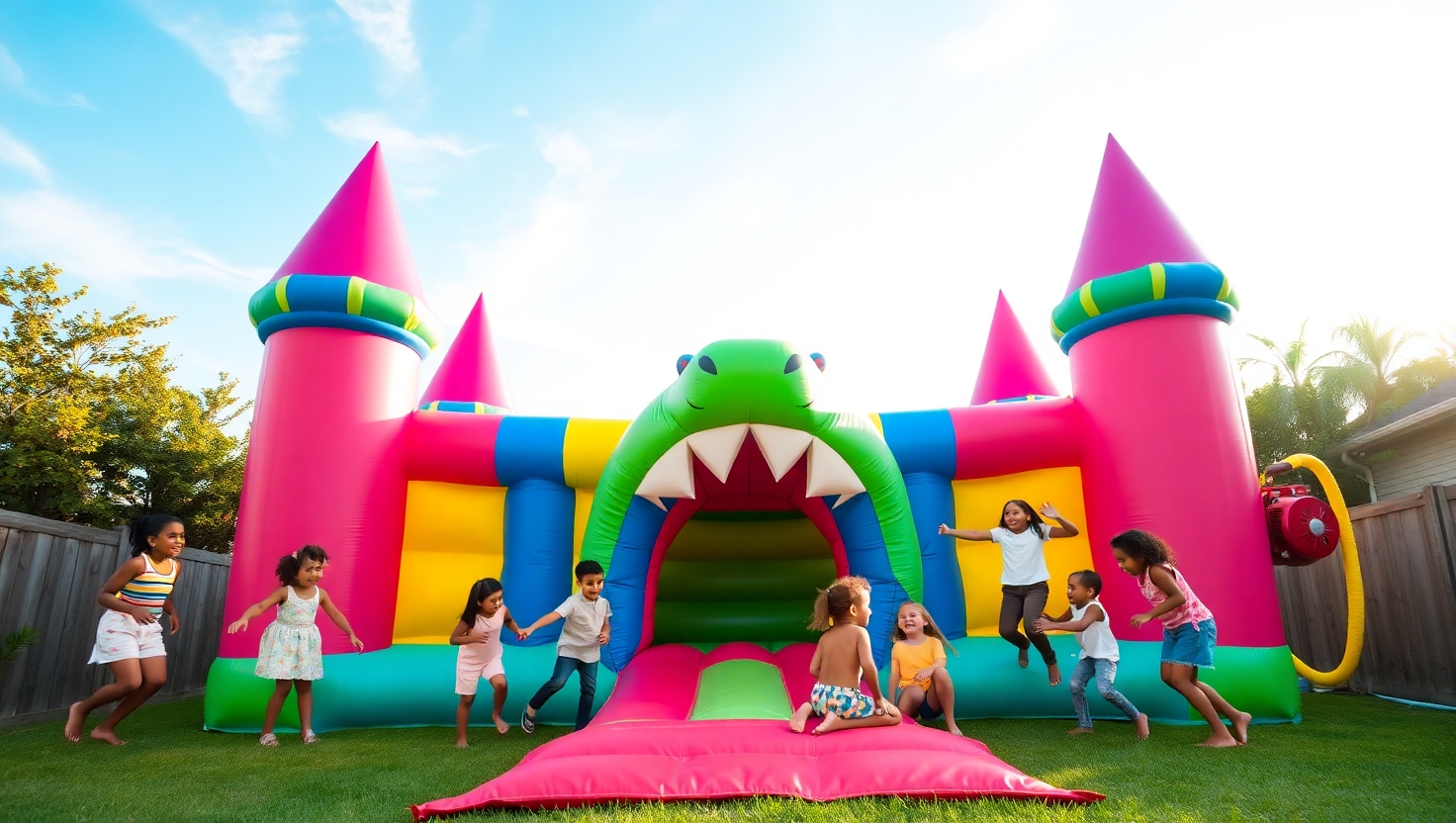
Conclusion
Bouncy castles are a fun and cost-effective addition to any event. While they do require electricity to operate, their energy consumption is relatively modest, especially when using modern, energy-efficient blowers. By understanding the factors that influence electricity usage and implementing simple cost-saving measures, you can enjoy the benefits of a bouncy castle without worrying about excessive energy costs.